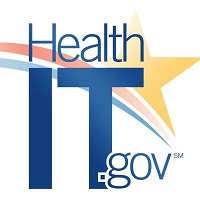 By Andrew Gettinger, MD & Kate Goodrich, MD
By Andrew Gettinger, MD & Kate Goodrich, MD
Twitter: @ONC_HealthIT
The U.S. Department of Health and Human Services (HHS) released a draft Strategy on Reducing Regulatory and Administrative Burden Relating to the Use of Health IT and EHRs for public comment. This work, led by the Office of the National Coordinator for Health Information Technology (ONC), in partnership with the Centers for Medicare & Medicaid Services (CMS), was required by Congress under the 21st Century Cures Act (Cures Act). This draft strategy includes recommendations that will allow physicians and other clinicians to provide effective care to their patients with a renewed sense of satisfaction for them and their patients.
Electronic health records (EHRs) have several advantages over paper-based records, from improving continuity of care during a natural disaster to enabling more reliable prescribing. While EHRs can also improve care delivery, quality, and outcomes, many clinicians have told us, and their members of Congress, that EHRs can make it difficult to provide effective patient care. In response to these concerns, the Cures Act instructed HHS to identify, through consultation with stakeholders, ways to reduce regulatory and administrative burdens relating to EHR use.
When using their EHRs, clinicians increasingly rely on checkboxes, templates, cut-and-paste functionality, and other workarounds that may counter the intended benefits of EHRs. We have heard from many clinicians that they continue to spend more time entering data, leaving less time for patient interaction. Required documentation elements and the ease with which electronic systems can increase the length of notes via “cut and paste” or similar mechanisms have led to “note bloat” in health records, making it difficult to find relevant patient information and effectively coordinate a patient’s care. Additionally, we heard that EHR reporting and related program participation could be less burdensome and better aligned across programs.
By releasing this draft strategy, we are taking one more step toward improving the interoperability and usability of health information by establishing a goal, strategy, and recommendations to reduce regulatory and administrative burdens relating to the use of EHRs.
But we can’t do this alone. The Cures Act, and a thorough analysis of the drivers of burden, require that the government and industry work together to reduce the burden of using EHRs. Over the past year, ONC and CMS brought together stakeholders who shared feedback on possible opportunities to reduce burden and make EHRs more usable. The draft strategy reflects this input received through several wide-reaching listening sessions, written input, and other stakeholder convenings.
Based on this input, the draft strategy outlines three overarching goals designed to reduce clinician burden:
- Reduce the effort and time required to record health information in EHRs for clinicians;
- Reduce the effort and time required to meet regulatory reporting requirements for clinicians, hospitals, and health care organizations; and
- Improve the functionality and intuitiveness (ease of use) of EHRs.
Now, we are encouraging you to give us your comments on the draft Strategy on Reducing Regulatory and Administrative Burden Relating to the Use of Health IT and EHRs. The public comment period ends on Monday January 28, 2019 at 11:59:59 PM ET. Our goal is to have a well-informed strategy that provides us – and the industry – with an actionable path when the report is finalized.
HHS shares a responsibility with others in the health care community to improve program policies, help guide health IT advancements, and to collaborate on ways to reduce clinician burden and improve patient care when EHRs are being used.
This post was originally published on the Health IT Buzz and is syndicated here with permission.
